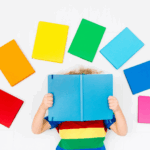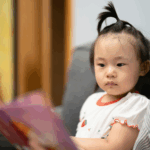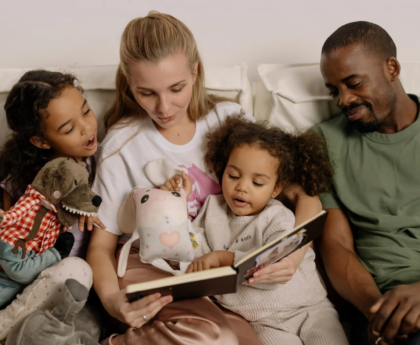A three-year-old hides behind your legs at a birthday party, overwhelmed by the noise and unfamiliar faces. A kindergartner suddenly refuses to go to school, tears streaming down their face as they cling to you at drop-off. These scenarios are heartbreakingly familiar to many parents because childhood anxiety affects millions of children every day.
While these big feelings can seem overwhelming, the right books can serve as powerful tools to help young children understand, name, and cope with their anxious emotions in healthy, age-appropriate ways.
Understanding Childhood Anxiety Through Literature
Childhood anxiety manifests differently across developmental stages, making it crucial for parents and educators to understand how worry appears in toddlers, preschoolers, and early elementary students. According to mental health professionals, anxiety often presents as physical symptoms in young children—tummy aches, difficulty sleeping, clinginess, or sudden behavioral changes that parents might not immediately connect to emotional distress.
Books specifically designed to address anxiety provide children with language to describe their internal experiences while offering concrete coping strategies they can understand and implement. Research from the Child Mind Institute demonstrates that bibliotherapy—using literature to support mental health—can significantly help children develop emotional intelligence and resilience when dealing with anxious feelings.
The most effective anxiety-focused children’s books avoid minimizing children’s feelings while providing hope and practical solutions.
Helping Kids with Anxiety (Across Age Groups)
For toddlers, anxiety often centers around separation from caregivers, new experiences, or changes in routine. Books for this age group should focus on reassurance, predictable patterns, and the security of loving relationships. The language needs to be simple and repetitive, with illustrations that clearly convey emotions through facial expressions and body language that toddlers can easily interpret.
Preschoolers develop more sophisticated emotional vocabulary and can begin understanding that feelings are temporary and manageable. Books for this group can introduce basic concepts about worry while providing concrete strategies like deep breathing, counting, or seeking help from trusted adults. Stories that show characters successfully overcoming anxious moments help preschoolers build confidence in their own abilities.
Pre-kindergarten children are preparing for significant transitions like starting formal school and making books about new experiences and social situations. These children can understand more complex emotional concepts and benefit from stories that address specific anxiety triggers like meeting new people, trying new activities, or handling disappointment and failure.
“Llama Llama Red Pajama” by Anna Dewdney
This beloved book follows Baby Llama as he experiences worry when Mama Llama goes downstairs, perfectly capturing the universal childhood experience of needing caregiver proximity for emotional security. The rhythmic, rhyming text makes the story predictable and comforting, while the resolution shows that Mama always returns, providing reassurance that resonates with anxious kiddos.
“In My Heart: A Book of Feelings” by Jo Witek
This book gives young children a multi-sensory exploration of emotions through innovative design elements, including die-cuts, textured pages, and vibrant illustrations. This interactive book helps very young children connect internal emotional experiences with external expressions, using simple language to describe how different feelings affect the heart—heavy like an elephant when sad, bright like a star when happy.
“The Way I Feel” by Janan Cain
This book features vibrant illustrations and relatable scenarios that demonstrate various feelings, including scared, shy, angry, and happy. Each emotion is presented with both the physical sensations and situational contexts that might trigger these feelings, helping preschoolers understand the connection between experiences and emotional responses.
“Ruby Finds a Worry” by Tom Percival
Read this one aloud to introduce anxiety as a manageable emotion through the story of a little girl who discovers a small worry that grows bigger when ignored but shrinks when shared with others. This metaphorical approach helps preschoolers understand anxiety in concrete terms while providing a clear strategy for managing worried feelings—talking to trusted adults.
“The Kissing Hand” by Audrey Penn
A family favorite, this story addresses separation anxiety specifically related to school transitions, following Chester Raccoon as he learns to cope with leaving his mother for school. Chester’s mother teaches him a special family tradition—placing a kiss in his palm that he can carry with him to feel her love even when they’re apart, providing a concrete strategy pre-K children can adapt for their own separation challenges.
“When Sophie Gets Angry—Really, Really Angry” by Molly Bang
Anger and anxiety may be related for certain children. This book relays the fact that intense emotions are normal and manageable through Sophie’s experience of overwhelming anger that gradually subsides through healthy coping strategies. While focused on anger, the book’s approach to emotional regulation applies broadly to anxiety, showing children that big feelings are temporary and that they have strategies available for emotional management.
Books for Childhood Anxiety
Parents and educators can maximize these books’ therapeutic value by reading them regularly rather than only during crisis moments, helping children internalize emotional concepts and coping strategies before they’re needed. Regular reading creates familiarity with emotional vocabulary and normalizes conversations about feelings, making children more likely to communicate their emotional needs proactively.
Stories to Alleviate Anxious Feelings
Good anxiety books build lasting emotional skills. When children regularly read stories that validate feelings while showing solutions, they develop confidence in handling tough situations.
Combine books with your own healthy emotional responses. Children learn as much from watching how adults handle stress as they do from stories.
Books work best as part of a bigger support system. If your child’s anxiety impacts daily life, sleep, or friendships, consider professional help. Books supplement therapy but don’t replace it.
Help your child become a confident reader
Strong reading skills help children access helpful books independently. The Reading.com app builds the decoding and comprehension skills children need to benefit from emotional support literature. Our systematic approach ensures children develop reading confidence that opens doors to lifelong learning and emotional growth. Start your free 7-day trial and support your child’s reading development.





